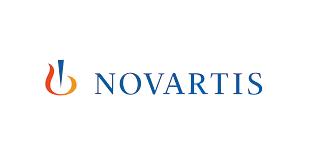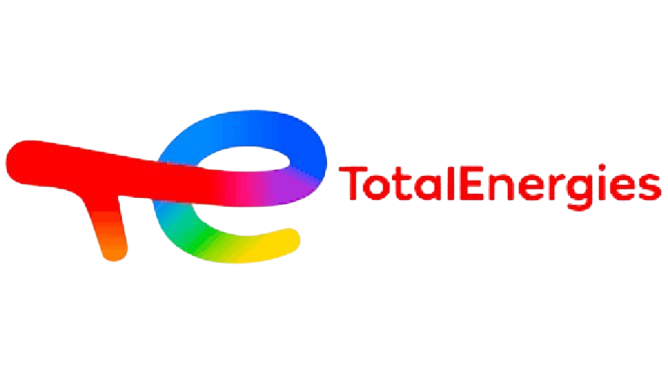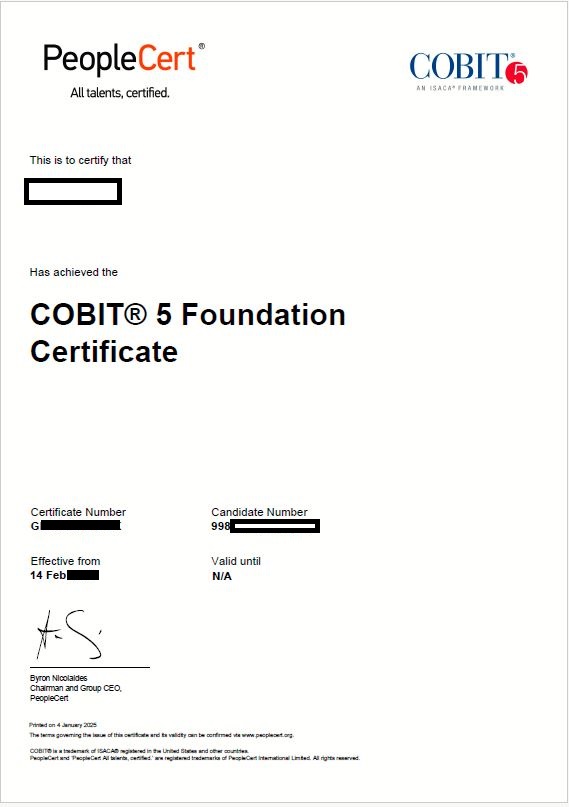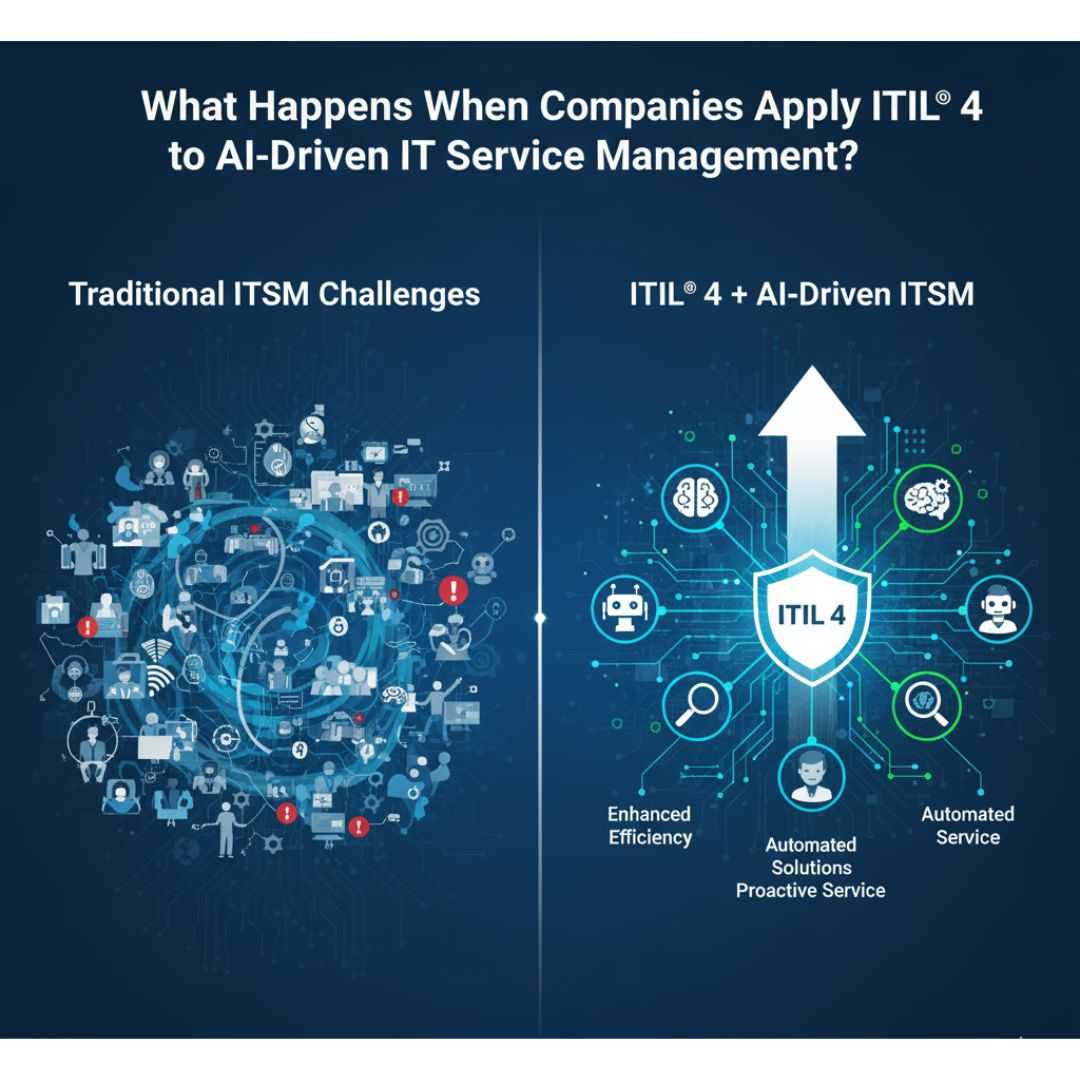Philippines: Why ScholarAcad is a Top Choice for COBIT 5 Foundation
Why Philippines Professionals Pick ScholarAcad for COBIT 5 Foundation Certification
ScholarAcad is well-known for its student-friendly teaching approach. We explain things in a way that’s easy to understand and use real-life business examples, so you can see how COBIT 5 works in actual companies. Here’s why ScholarAcad is a smart choice for your COBIT 5 foundation training in Philippines:
Here is the structured, comprehensive curriculum-
1. Module: Governance System and Components:
This module introduces what a governance system is and why it's important in any organisation. You’ll see how it helps control and manage IT processes.
- Introduction to the governance system
- Components of the governance system
- Role of governance in organisational structure
- Governance frameworks overview
2. Module: Governance and Management Objectives:
This module explains the goals of governance and management and how both need to work together to support business success.
- Defining governance objectives
- Understanding management objectives
- Alignment between governance and management objectives
- Importance of clear objectives in governance
3. Module: Principles:
In this module, you’ll learn the basic principles of COBIT 5. These are the foundations for making good decisions in IT governance.
- COBIT principles overview
- Understanding COBIT principles in governance
- Application of principles in governance processes
- Importance of adhering to principles
4. Module: Framework Introduction:
This part of the course explains the full COBIT 5 framework. You’ll see how it has changed over time and what parts are included.
- Overview of the COBIT 5 framework
- Evolution of COBIT frameworks
- Key components of the COBIT 5 framework
- Understanding COBIT 5 domains and processes
5. Module: Implementation:
This module shows how to use COBIT 5 in your job or project. It gives you steps and best practices for success.
- Steps for implementing COBIT 5
- Integrating COBIT 5 with existing processes
- Addressing implementation challenges
- Best practices for COBIT 5 implementation
6. Module: Designing a Tailored Governance System:
Here, you’ll learn how to make governance systems that fit your specific company or project. This is important because not every organisation is the same.
- Customising governance systems
- Assessing organisational needs
- Mapping COBIT 5 to organisational requirements
- Tailoring governance processes
7. Module: Performance Management:
In this module, you’ll learn how to check if your governance system is working. This module covers how to use measurements and performance indicators.
- Importance of performance management in governance
- Key Performance Indicators (KPIs) in governance
- Monitoring and evaluating governance performance
- Continuous improvement in governance processes
8. Module: Business Case:
This final module teaches you how to show others the value of using COBIT 5. You’ll learn how to explain the benefits in terms of money and performance.
- Developing a business case for governance
- Justification for investing in governance
- Cost-benefit analysis of governance implementation
- Communicating the business case to stakeholders
View More
Participant Group for COBIT 5 Foundation Course Philippines

COBIT 5 Foundation Certification Philippines
The COBIT 5 Foundation course is for anyone who wants to learn how to manage IT better. You don’t need a technical background to join.
This course is best for:
IT Governance Managers – Strengthen governance frameworks and align IT with organizational goals.
IT Risk Managers – Improve risk oversight using a globally recognized governance framework.
IT Auditors – Apply structured approaches to evaluate IT controls, compliance, and performance.
Compliance Officers – Ensure policies align with both business objectives and IT governance standards.
IT Consultants – Deliver strategic advisory services and implement governance models for clients.
IT Service Managers – Enhance service quality while ensuring governance and value delivery.

COBIT 5 Foundation Among Highest Paying Philippines





















Advanced Online and Group Training Modules COBIT 5 Foundation Philippines
COBIT 5 Foundation Training Course Delivery Option for Philippines
ScholarAcad has training batches available, so you can join the course at a time that works for you. Check out our upcoming training batches
Thu
Fri
09:00 - 17:00 (PHT)
- # IU427JX3D174
- English (Language)
- Exam Voucher + 4 Sample Question paper
Sat
Sun
09:00 - 17:00 (PHT)
- # IU427JXE7174
- English (Language)
- Exam Voucher + 4 Sample Question paper
Thu
Fri
09:00 - 17:00 (PHT)
- # IU427JXCD174
- English (Language)
- Exam Voucher + 4 Sample Question paper
Thu
Fri
09:00 - 17:00 (PHT)
- # IU427JXCE174
- English (Language)
- Exam Voucher + 4 Sample Question paper
Sat
Sun
09:00 - 17:00 (PHT)
- # IU427JX91174
- English (Language)
- Exam Voucher + 4 Sample Question paper
Sat
Sun
09:00 - 17:00 (PHT)
- # IU427JX42174
- English (Language)
- Exam Voucher + 4 Sample Question paper
21-Day Roadmap to COBIT 5 Foundation Certification Exam Success: Philippines

Dive deep into the COBIT 5 framework. Understand its principles, processes, and governance objectives.
Tailor your study plan to your learning style and available time.
Use interactive tools like quizzes, flashcards, and practice exams to reinforce your understanding of COBIT 5 concepts.
Collaborate with other COBIT 5 aspirants to share knowledge, discuss challenges, and stay motivated
Consistent practice is key to success. Regularly review COBIT 5 concepts, solve practice questions
Believe in your ability to succeed. Stay positive throughout your preparation and maintain a confident mindset.
Practice relaxation techniques to manage exam-day stress.
Climb the career ladder by COBIT 5 Foundation Certification Philippines

This COBIT 5 Foundation certificate in Philippines is respected around the world and can help you grow in your career. Whether you're in Philippines or any other state, you can take the training from home using the COBIT 5 Foundation online training.
You don’t need to travel or attend physical classes. Everything is done online with full support from your trainer. This makes it easy for working professionals and students to learn and get certified.
The COBIT 5 foundation certification shows employers that you understand IT governance and can apply it to real situations. It can help you move into better jobs in IT audit, risk management, and compliance.
View More
Philippines COBIT 5 Foundation : Alummi Achievements at ScholarAcad
The COBIT course with Scholaracad was excellent. Umesh explained the information clearly, using examples applicable to projects in the Philippines. The Scholaracad team was very helpful and responsive. Salamat po!

General Frequently Asked Questions
1. How can COBIT 5 Foundation certification enhance my career?
COBIT 5 Foundation certification can enhance your career by:
- Demonstrating your expertise in IT governance
- Improving your job prospects
- Increasing your earning potential
- Providing professional development
- Networking opportunities
2. What career opportunities are available with COBIT 5 Foundation certification?
COBIT 5 Foundation certification can open doors to various IT governance roles, including:
- IT Manager
- IT Auditor
- IT Risk Manager
- IT Compliance Officer
3. Does COBIT 5 Foundation certification lead to higher salaries?
Yes, COBIT 5 Foundation certification can lead to higher salaries by demonstrating your expertise in IT governance and making you a more valuable asset to employers.
4. How does COBIT 5 Foundation certification impact career growth?
COBIT 5 Foundation certification can impact career growth by:
- Improving your job prospects
- Increasing your earning potential
- Providing professional development
- Networking opportunities
- Opening doors to new career paths
5. What industries value COBIT 5 Foundation certification the most?
COBIT 5 Foundation certification is valued in a variety of industries, including:
- Financial services
- Healthcare
- Government
- Technology
6. How does COBIT 5 Foundation certification compare with other IT governance certifications for career advancement?
COBIT 5 Foundation certification is a widely recognized standard in IT governance, providing a comprehensive framework for managing IT risks and ensuring alignment with business objectives. It can offer significant career advancement opportunities compared to other IT governance certifications.
7. Can COBIT 5 Foundation certification help in transitioning to IT governance roles?
Yes, COBIT 5 Foundation certification can help you transition to IT governance roles by demonstrating your expertise in IT governance and providing a solid foundation for your career.
8. What are the career paths after obtaining COBIT 5 Foundation certification?
Career paths after COBIT 5 Foundation certification can include:
- IT Manager
- IT Auditor
- IT Risk Manager
- IT Compliance Officer
- IT Consultant
- IT Governance Specialist
9. How to leverage COBIT 5 Foundation certification for career development?
To leverage COBIT 5 Foundation certification for career development, you can:
- Network with other professionals
- Seek out new opportunities
- Continue your professional development
- Highlight your certification on your resume and LinkedIn profile
10. What are the long-term career benefits of COBIT 5 Foundation certification?
The long-term career benefits of COBIT 5 Foundation certification include:
- Increased earning potential
- Career advancement
- Job security
- Professional development
- Networking opportunities
11. How can COBIT 5 Foundation certification help in leadership roles?
COBIT 5 Foundation certification can help you in leadership roles by:
- Demonstrating your expertise in IT governance
- Providing a structured approach to managing IT risks
- Enhancing your decision-making skills
- Improving your communication and collaboration abilities
12. What is the demand for COBIT 5 Foundation certified professionals?
The demand for COBIT 5 Foundation certified professionals is high, as organizations increasingly recognize the importance of IT governance.
13. How does COBIT 5 Foundation certification affect job security?
COBIT 5 Foundation certification can improve job security by making you a more valuable asset to your employer and increasing your marketability in the job market.
14. What are the common career challenges faced by COBIT 5 Foundation certified professionals?
Common career challenges faced by COBIT 5 Foundation certified professionals include:
- Staying updated on the latest IT governance trends
- Balancing work and personal life
- Networking with other professionals
15. How does COBIT 5 Foundation certification support professional development?
COBIT 5 Foundation certification supports professional development by:
- Providing a structured approach to IT governance
- Enhancing your skills and knowledge
- Opening doors to new opportunities
- Networking with other professionals
16. Can COBIT 5 Foundation certification open doors to international careers?
Yes, COBIT 5 Foundation certification is recognized globally, which can increase your chances of securing international job opportunities.
17. What role does COBIT 5 Foundation certification play in career advancement?
COBIT 5 Foundation certification can play a significant role in career advancement by demonstrating your expertise in IT governance and opening doors to new opportunities.
18. How to negotiate a salary increase with COBIT 5 Foundation certification?
When negotiating a salary increase, highlight the value that your COBIT 5 Foundation certification brings to the organization, such as improved IT governance, reduced risks, and enhanced efficiency.
19. What are the networking opportunities for COBIT 5 Foundation certified professionals?
COBIT 5 Foundation certified professionals can network with other professionals through:
- Industry conferences
- Online communities
- Professional organizations
20. How to showcase COBIT 5 Foundation certification on a resume?
Highlight your COBIT 5 Foundation certification on your resume by:
- Listing it prominently in the certifications section
- Describing the skills and knowledge you gained from the certification
Quantifying the benefits you have brought to your organization
View More
1. What are the benefits of COBIT 5 Foundation certification?
COBIT 5 Foundation certification offers numerous benefits, including:
- Enhanced career prospects
- Increased earning potential
- Improved job security
- Professional development
- Networking opportunities
- Improved IT governance skills
- Enhanced organizational performance
2. How does COBIT 5 Foundation certification improve IT governance skills?
COBIT 5 Foundation certification provides a structured framework for IT governance, equipping professionals with the skills and knowledge needed to effectively manage IT risks, align IT with business objectives, and ensure compliance.
3. Can COBIT 5 Foundation certification lead to job promotions?
Yes, COBIT 5 Foundation certification can lead to job promotions by demonstrating your expertise in IT governance and making you a more valuable asset to your employer.
4. What are the benefits of COBIT 5 Foundation certification for organizations?
COBIT 5 Foundation certification can benefit organizations by:
- Improving IT governance
- Reducing risks
- Enhancing compliance
- Optimizing IT processes
- Supporting strategic IT management
5. How does COBIT 5 Foundation certification benefit an IT manager's career?
COBIT 5 Foundation certification can benefit an IT manager's career by:
- Demonstrating expertise in IT governance
- Improving leadership skills
- Enhancing decision-making abilities
- Increasing earning potential
6. What are the advantages of holding COBIT 5 Foundation certification over other IT governance certifications?
COBIT 5 Foundation certification provides a comprehensive framework for IT governance, covering all aspects of IT management. It is widely recognized and respected in the industry.
7. How does COBIT 5 Foundation certification help in optimizing IT processes?
COBIT 5 Foundation certification provides a structured approach to IT process optimization, helping organizations to identify inefficiencies, reduce costs, and improve performance.
8. What are the specific benefits of COBIT 5 Foundation certification in the tech industry?
COBIT 5 Foundation certification is particularly beneficial in the tech industry due to the increasing complexity of IT environments and the need for effective IT governance.
9. How does COBIT 5 Foundation certification contribute to organizational governance?
COBIT 5 Foundation certification provides a framework for aligning IT with business objectives, ensuring compliance with regulations, and managing IT risks.
10. What are the benefits of COBIT 5 Foundation certification for career changers?
COBIT 5 Foundation certification can help career changers transition into IT governance roles by providing a solid foundation in the field.
11. How does COBIT 5 Foundation certification assist in achieving better compliance?
COBIT 5 Foundation certification provides a framework for ensuring compliance with regulations and industry standards.
12. What is the impact of COBIT 5 Foundation certification on business agility?
COBIT 5 Foundation certification can improve business agility by providing a structured approach to IT governance, enabling organizations to adapt to changing business needs.
13. How does COBIT 5 Foundation certification support continuous improvement in IT governance?
COBIT 5 Foundation certification provides a framework for continuous improvement, helping organizations to identify areas for improvement and implement changes.
14. What are the organizational benefits of having COBIT 5 Foundation certified employees?
Having COBIT 5 Foundation certified employees can benefit organizations by:
- Improving IT governance
- Reducing risks
- Enhancing compliance
- Optimizing IT processes
- Supporting strategic IT management
15. How does COBIT 5 Foundation certification enhance risk management?
COBIT 5 Foundation certification provides a framework for identifying, assessing, and mitigating IT risks.
16. What are the benefits of COBIT 5 Foundation certification for consultancy roles?
COBIT 5 Foundation certification can enhance the credibility and expertise of IT consultants, making them more attractive to clients.
17. How does COBIT 5 Foundation certification contribute to strategic IT management?
COBIT 5 Foundation certification provides a framework for aligning IT with business objectives, ensuring that IT investments support organizational goals.
18. What is the role of COBIT 5 Foundation certification in driving innovation in IT governance?
COBIT 5 Foundation certification provides a foundation for innovation in IT governance by providing a structured approach to managing IT risks and ensuring alignment with business objectives.
19. How does COBIT 5 Foundation certification help in managing complex IT environments?
COBIT 5 Foundation certification provides a framework for managing complex IT environments by providing a structured approach to IT governance, risk management, and compliance.
20. What are the key benefits of COBIT 5 Foundation certification for senior IT professionals?
The key benefits of COBIT 5 Foundation certification for senior IT professionals include:
- Enhanced credibility and expertise
- Improved decision-making
- Improved leadership skills
- Increased earning potential
- Networking opportunities
View More
1. How long does it take to complete COBIT 5 Foundation certification?
The time to complete COBIT 5 Foundation certification depends on your study habits, the intensity of your preparation, and the format of your training. Typically, it takes several weeks to a few months.
2. What is the duration of the COBIT 5 Foundation exam?
The COBIT 5 Foundation exam typically lasts 2.5 hours.
3. How much time is required to prepare for the COBIT 5 Foundation certification?
The recommended study time for COBIT 5 Foundation certification is 20-40 hours per week.
4. How long does it take to receive the COBIT 5 Foundation certification after passing the exam?
It typically takes a few weeks to receive your COBIT 5 Foundation certification after passing the exam.
5. How many hours of training are required for COBIT 5 Foundation certification?
The recommended training hours vary depending on the provider and your learning style, but typically range from 20-40 hours.
6. What is the recommended study duration for COBIT 5 Foundation certification?
The recommended study duration for COBIT 5 Foundation certification is 20-40 hours per week.
7. How long does it take to see career benefits after COBIT 5 Foundation certification?
The time it takes to see career benefits after COBIT 5 Foundation certification varies depending on individual circumstances, but many professionals see results within a few months.
8. How much time should I allocate for COBIT 5 Foundation exam revision?
It's recommended to allocate 10-15 hours for exam revision after completing your training.
9. How long does it take to get COBIT 5 Foundation exam results?
You should receive your COBIT 5 Foundation exam results within a few weeks.
10. What is the average time commitment for COBIT 5 Foundation certification?
The average time commitment for COBIT 5 Foundation certification is several weeks to a few months.
11. How long does COBIT 5 Foundation certification last before renewal is required?
COBIT 5 Foundation certification does not require renewal.
12. How many hours per week should I study for COBIT 5 Foundation certification?
It's recommended to study 20-40 hours per week for COBIT 5 Foundation certification.
13. How long is the COBIT 5 Foundation certification renewal process?
COBIT 5 Foundation certification does not require renewal.
14. How much time does it take to schedule the COBIT 5 Foundation exam?
Scheduling the COBIT 5 Foundation exam can typically be done within a few days.
15. How long does it take to complete COBIT 5 Foundation training online?
Online COBIT 5 Foundation training can typically be completed in a few weeks to a few months.
16. What is the total duration needed to prepare for COBIT 5 Foundation certification?
The total duration needed to prepare for COBIT 5 Foundation certification depends on your study habits and the intensity of your preparation. However, it typically takes several weeks to a few months.
17. How long does it take to complete COBIT 5 Foundation bootcamp training?
COBIT 5 Foundation bootcamp training typically lasts a few days to a week.
18. How long is the COBIT 5 Foundation application approval process?
The COBIT 5 Foundation application approval process typically takes a few days.
19. Can I complete COBIT 5 Foundation certification in less than a month?
It's possible to complete COBIT 5 Foundation certification in less than a month with dedicated study and training, but it may be challenging.
20. What is the typical duration of COBIT 5 Foundation exam preparation courses?
COBIT 5 Foundation exam preparation courses typically last a few days to a week.
21. How long does it take to get COBIT 5 Foundation certified?
The time to get COBIT 5 Foundation certified depends on your study habits, the intensity of your preparation, and the format of your training. Typically, it takes several weeks to a few months.
22. What is the average study time required for COBIT 5 Foundation certification?
The average study time required for COBIT 5 Foundation certification is 20-40 hours per week.
23. How much time is needed to complete COBIT 5 Foundation training?
The recommended training hours vary depending on the provider and your learning style, but typically range from 20-40 hours.
24. What is the duration of the COBIT 5 Foundation exam?
The COBIT 5 Foundation exam typically lasts 2.5 hours.
25. How long does it take to receive COBIT 5 Foundation certification results?
It typically takes a few weeks to receive your COBIT 5 Foundation certification results.
26. What is the typical duration of COBIT 5 Foundation online courses?
COBIT 5 Foundation online courses typically last a few weeks to a few months.
27. How long does it take to prepare for the COBIT 5 Foundation exam?
The recommended preparation time for the COBIT 5 Foundation exam is 20-40 hours per week.
28. What is the duration of COBIT 5 Foundation certification validity?
COBIT 5 Foundation certification does not have a fixed validity period.
29. How long does it take to understand COBIT 5 principles for the exam?
Understanding COBIT 5 principles can take several weeks or months, depending on your prior knowledge and study habits.
30. What is the recommended duration for COBIT 5 Foundation study sessions?
It's recommended to study 2-4 hours per day for COBIT 5 Foundation certification.
31. How much time should I dedicate daily to COBIT 5 Foundation exam preparation?
It's recommended to dedicate 2-4 hours per day for COBIT 5 Foundation exam preparation.
32. What is the timeline for completing COBIT 5 Foundation certification?
The timeline for completing COBIT 5 Foundation certification depends on your study habits and the intensity of your preparation. Typically, it takes several weeks to a few months.
33. How long does it take to schedule the COBIT 5 Foundation exam?
Scheduling the COBIT 5 Foundation exam can typically be done within a few days.
34. What is the duration of COBIT 5 Foundation classroom training?
COBIT 5 Foundation classroom training typically lasts a few days to a week.
35. How long does it take to become proficient in COBIT 5 practices?
Becoming proficient in COBIT 5 practices takes consistent study and practice. It can take several weeks to a few months.
36. What is the duration of COBIT 5 Foundation certification renewal process?
COBIT 5 Foundation certification does not require renewal.
37. How much time does it take to master the COBIT 5 framework?
Mastering the COBIT 5 framework takes consistent study and practice. It can take several weeks to a few months.
38. What is the duration of COBIT 5 Foundation bootcamp training?
COBIT 5 Foundation bootcamp training typically lasts a few days to a week.
39. How long does it take to get a job after COBIT 5 Foundation certification?
The time it takes to get a job after COBIT 5 Foundation certification varies depending on individual circumstances and job market conditions.
40. What is the time commitment for COBIT 5 Foundation self-study?
The time commitment for COBIT 5 Foundation self-study depends on your study habits and the intensity of your preparation. However, it typically takes several weeks to a few months.
41. How long does it take to complete COBIT 5 Foundation practice exams?
Completing COBIT 5 Foundation practice exams can take several hours.
42. What is the typical duration of COBIT 5 Foundation certification workshops?
COBIT 5 Foundation certification workshops typically last a few days to a week.
43. How long does it take to achieve COBIT 5 Foundation certification after training?
The time it takes to achieve COBIT 5 Foundation certification after training depends on your study habits and the intensity of your preparation. However, it typically takes several weeks to a few months.
44. What is the time frame for COBIT 5 Foundation certification preparation?
The recommended time frame for COBIT 5 Foundation certification preparation is 20-40 hours per week.
45. How long does it take to learn the basics of COBIT 5?
Learning the basics of COBIT 5 can take several weeks to a few months.
46. What is the average duration of COBIT 5 Foundation exam preparation courses?
COBIT 5 Foundation exam preparation courses typically last a few days to a week.
47. How long does it take to complete COBIT 5 Foundation certification for beginners?
The time it takes to complete COBIT 5 Foundation certification for beginners can vary depending on their prior knowledge, study habits, and the intensity of their preparation. However, it typically takes several weeks to a few months.
48. What is the typical time frame to understand COBIT 5 concepts?
Understanding COBIT 5 concepts can take several weeks to a few months, depending on your prior knowledge and study habits.
49. How long does it take to become an expert in COBIT 5 after certification?
Becoming an expert in COBIT 5 requires continuous learning and practice. It can take several years to develop a deep understanding of the COBIT framework.
50. What is the duration of COBIT 5 Foundation certification for working professionals?
The duration of COBIT 5 Foundation certification for working professionals can vary depending on their work schedules and study habits. However, it is typically possible to complete the certification within a few months.
51. How much time does it take to update COBIT 5 knowledge after certification?
Staying updated on the latest developments in COBIT requires ongoing learning and professional development. It is recommended to dedicate a few hours per month to updating your COBIT 5 knowledge.
52. What is the duration of COBIT 5 Foundation certification for IT managers?
The duration of COBIT 5 Foundation certification for IT managers can vary depending on their workload and study habits. However, it is typically possible to complete the certification within a few months.
53. How long does it take to get hands-on experience with COBIT 5?
Gaining hands-on experience with COBIT 5 can take several months to a year, depending on your work environment and opportunities.
54. What is the duration of COBIT 5 Foundation certification for non-IT professionals?
The duration of COBIT 5 Foundation certification for non-IT professionals can vary depending on their prior knowledge and study habits. However, it is typically possible to complete the certification within a few months.
55. How long does it take to learn COBIT 5 for the certification exam?
The time it takes to learn COBIT 5 for the certification exam depends on your study habits and the intensity of your preparation. However, it typically takes several weeks to a few months.
56. What is the timeline for COBIT 5 Foundation certification completion?
The timeline for COBIT 5 Foundation certification completion depends on your study habits and the intensity of your preparation. However, it typically takes several weeks to a few months.
57. How long does it take to acquire COBIT 5 Foundation certification for experienced professionals?
Experienced professionals may be able to complete COBIT 5 Foundation certification in a shorter timeframe than beginners. However, the exact duration will depend on their level of knowledge and experience.
58. What is the duration of COBIT 5 Foundation online bootcamps?
COBIT 5 Foundation online bootcamps typically last a few days to a week.
59. How long does it take to prepare for COBIT 5 Foundation in a corporate setting?
The time it takes to prepare for COBIT 5 Foundation in a corporate setting can vary depending on your workload and other commitments. However, it is typically possible to complete the certification within a few months.
60. What is the duration of COBIT 5 Foundation exam registration process?
The COBIT 5 Foundation exam registration process typically takes a few days.
61. How much time is needed to complete COBIT 5 Foundation mock tests?
Completing COBIT 5 Foundation mock tests can take several hours.
62. How long does it take to review COBIT 5 Foundation exam topics?
Reviewing COBIT 5 Foundation exam topics can take several hours to a few days, depending on your level of knowledge and understanding.
63. What is the average time to pass the COBIT 5 Foundation exam on the first attempt?
The average time to pass the COBIT 5 Foundation exam on the first attempt varies depending on individual circumstances. However, with adequate preparation, it is possible to pass the exam within a few attempts.
64. How long does it take to learn COBIT 5 controls for certification?
Learning COBIT 5 controls can take several weeks to a few months, depending on your prior knowledge and study habits.
65. What is the duration of COBIT 5 Foundation weekend courses?
COBIT 5 Foundation weekend courses typically last a few days.
66. How long does it take to get COBIT 5 Foundation certification for consultants?
The time it takes to get COBIT 5 Foundation certification for consultants can vary depending on their workload and study habits. However, it is typically possible to complete the certification within a few months.
67. What is the timeline for updating COBIT 5 Foundation certification?
COBIT 5 Foundation certification does not require renewal. However, it is recommended to stay updated on the latest developments in IT governance.
68. How long does it take to master COBIT 5 governance practices?
Mastering COBIT 5 governance practices takes consistent study and practice. It can take several years to develop a deep understanding of the COBIT framework.
69. How long does it take to learn COBIT 5 framework after certification?
Learning the COBIT 5 framework after certification can take several weeks to a few months, depending on your study habits and the intensity of your preparation.
70. What is the recommended duration for COBIT 5 Foundation recertification?
COBIT 5 Foundation certification does not require renewal.
View More
1. What are the prerequisites for COBIT 5 Foundation certification?
There are no specific prerequisites for COBIT 5 Foundation certification, but a basic understanding of IT governance and management is recommended.
2. How do I become COBIT 5 Foundation certified?
To become COBIT 5 Foundation certified, you must:
- Register for an accredited training course
- Pass the COBIT 5 Foundation certification exam
3. What is the cost of the COBIT 5 Foundation certification?
The cost of COBIT 5 Foundation certification varies depending on the training provider and location.
4. Is COBIT 5 Foundation certification recognized globally?
Yes, COBIT 5 Foundation certification is recognized globally as a standard in IT governance.
5. How do I maintain my COBIT 5 Foundation certification?
COBIT 5 Foundation certification does not require renewal.
6. What are the benefits of obtaining COBIT 5 Foundation certification?
The benefits of COBIT 5 Foundation certification include:
- Enhanced career prospects
- Increased earning potential
- Improved job security
- Professional development
- Networking opportunities
7. Can I take the COBIT 5 Foundation exam online?
Yes, many COBIT 5 Foundation training providers offer online proctored exams.
8. What is the passing score for the COBIT 5 Foundation exam?
The passing score for the COBIT 5 Foundation exam is 55%.
9. How long is the COBIT 5 Foundation certification valid?
COBIT 5 Foundation certification is valid for three years.
10. What study materials are recommended for COBIT 5 Foundation certification?
Recommended study materials for COBIT 5 Foundation certification include:
- COBIT 5 Foundation manual
- Practice exams
- Online courses
11. Are practice exams available for COBIT 5 Foundation certification?
Yes, practice exams are available for COBIT 5 Foundation certification.
12. How does COBIT 5 Foundation certification differ from other IT governance certifications?
COBIT 5 Foundation certification provides a comprehensive framework for IT governance, covering all aspects of IT management. Other certifications may focus on specific areas of IT governance, such as risk management or security.
13. How can I verify a COBIT 5 Foundation certification?
You can verify a COBIT 5 Foundation certification through the official COBIT website.
14. What is the renewal process for COBIT 5 Foundation certification?
COBIT 5 Foundation certification does not require renewal.
15. What are the job opportunities after earning COBIT 5 Foundation certification?
COBIT 5 Foundation certification can open doors to various IT governance roles, including:
- IT Manager
- IT Auditor
- IT Risk Manager
- IT Compliance Officer
16. What is the process to register for the COBIT 5 Foundation exam?
To register for the COBIT 5 Foundation exam, you must:
- Choose a training provider
- Register for the exam through the training provider
17. How does COBIT 5 Foundation certification compare with COBIT 2019 Foundation certification?
COBIT 5 Foundation and COBIT 2019 Foundation are both recognized certifications in IT governance. However, COBIT 2019 Foundation is the latest version of the COBIT framework.
18. What is the structure and format of the COBIT 5 Foundation exam?
The COBIT 5 Foundation exam is a multiple-choice exam.
19. Can I skip COBIT 5 training and go directly to the exam?
While it is possible to self-study for the COBIT 5 Foundation exam, attending a training course can provide valuable insights and support.
20. What happens if I fail the COBIT 5 Foundation certification exam?
If you fail the COBIT 5 Foundation certification exam, you can retake it after a waiting period.
21. What is the COBIT 5 Foundation certification?
COBIT 5 Foundation certification is a globally recognized certification that validates your understanding of the COBIT framework for IT governance.
22. How to become COBIT 5 Foundation certified?
To become COBIT 5 Foundation certified, you must:
- Register for an accredited training course
- Pass the COBIT 5 Foundation certification exam
23. What are the prerequisites for COBIT 5 Foundation certification?
There are no specific prerequisites for COBIT 5 Foundation certification, but a basic understanding of IT governance and management is recommended.
24. What is the cost of COBIT 5 Foundation certification?
The cost of COBIT 5 Foundation certification varies depending on the training provider and location.
25. What is the validity period of COBIT 5 Foundation certification?
COBIT 5 Foundation certification does not have a fixed validity period. However, it is recommended to stay updated on the latest developments in IT governance.
26. Can I take the COBIT 5 Foundation exam online?
Yes, many COBIT 5 Foundation training providers offer online proctored exams.
27. What are the benefits of COBIT 5 Foundation certification?
The benefits of COBIT 5 Foundation certification include:
- Enhanced career prospects
- Increased earning potential
- Improved job security
- Professional development
- Networking opportunities
28. Which organizations recognize COBIT 5 Foundation certification?
COBIT 5 Foundation certification is recognized by organizations worldwide, including governments, businesses, and IT professionals.
29. How to prepare for the COBIT 5 Foundation exam?
To prepare for the COBIT 5 Foundation exam, you can:
- Study the COBIT 5 framework
- Attend a training course
- Practice with sample questions
- Join a study group
30. What is the passing score for COBIT 5 Foundation certification?
The passing score for the COBIT 5 Foundation exam is 55%.
31. Is COBIT 5 Foundation certification suitable for beginners?
Yes, COBIT 5 Foundation certification is suitable for individuals with little to no experience in IT governance.
32. What are the career opportunities after COBIT 5 Foundation certification?
COBIT 5 Foundation certification can open doors to various IT governance roles, including:
- IT Manager
- IT Auditor
- IT Risk Manager
- IT Compliance Officer
33. How often should COBIT 5 Foundation certification be renewed?
COBIT 5 Foundation certification does not require renewal.
34. What study materials are recommended for COBIT 5 Foundation certification?
Recommended study materials for COBIT 5 Foundation certification include:
- COBIT 5 framework
- Practice exams
- Online courses
- Study guides
35. What is the difference between COBIT 5 Foundation and other IT governance certifications?
COBIT 5 Foundation provides a comprehensive framework for IT governance, covering all aspects of IT management. Other certifications may focus on specific areas of IT governance, such as risk management or security.
36. Can COBIT 5 Foundation certification help in career advancement?
Yes, COBIT 5 Foundation certification can help in career advancement by demonstrating your expertise in IT governance.
37. What are the exam formats for COBIT 5 Foundation certification?
The COBIT 5 Foundation exam is a multiple-choice exam.
38. How does COBIT 5 Foundation certification compare with COBIT 2019 Foundation?
COBIT 5 Foundation and COBIT 2019 Foundation are both recognized certifications in IT governance. However, COBIT 2019 Foundation is the latest version of the COBIT framework.
39. Are there any free resources for COBIT 5 Foundation certification preparation?
There may be some free resources available online for COBIT 5 Foundation certification preparation, such as sample questions and study guides.
40. What is the role of COBIT 5 Foundation in IT governance?
COBIT 5 Foundation provides a comprehensive framework for IT governance, helping organizations to align their IT processes with their business objectives.
41. How to maintain COBIT 5 Foundation certification?
COBIT 5 Foundation certification does not require renewal. However, it is recommended to stay updated on the latest developments in IT governance.
42. Which books are best for COBIT 5 Foundation certification?
Recommended books for COBIT 5 Foundation certification include:
- COBIT 5 Framework
- COBIT 5 Implementation Guide
43. What is the best way to pass the COBIT 5 Foundation exam on the first attempt?
To increase your chances of passing the COBIT 5 Foundation exam on the first attempt, it is recommended to:
- Study the COBIT 5 framework thoroughly
- Practice with sample questions
- Attend a training course
- Join a study group
44. Is COBIT 5 Foundation certification globally recognized?
Yes, COBIT 5 Foundation certification is recognized globally as a standard in IT governance.
45. What is the ROI of COBIT 5 Foundation certification?
The ROI of COBIT 5 Foundation certification can be significant for both individuals and organizations. For individuals, it can lead to increased earning potential, career advancement, and improved job security. For organizations, COBIT 5 Foundation certification can improve IT governance, reduce risks, and enhance overall business performance.
46. Which online platforms offer COBIT 5 Foundation certification courses?
Several online platforms offer COBIT 5 Foundation certification courses, including:
- IT Governance Institute (ITGI)
- Udemy
- Coursera
- LinkedIn Learning
47. How to register for the COBIT 5 Foundation exam?
To register for the COBIT 5 Foundation exam, you typically need to:
- Choose an accredited training provider
- Create an account on the training provider's platform
- Select the COBIT 5 Foundation exam
- Pay the exam fee
48. What are the key topics covered in the COBIT 5 Foundation certification?
The COBIT 5 Foundation certification covers the following key topics:
- COBIT framework
- IT governance principles
- IT processes
- IT controls
- Governance, risk, and compliance (GRC)
49. How does COBIT 5 Foundation certification benefit IT professionals?
COBIT 5 Foundation certification benefits IT professionals by:
- Demonstrating expertise in IT governance
- Improving career prospects
- Increasing earning potential
- Providing a structured approach to IT management
50. Can I combine COBIT 5 Foundation certification with other certifications?
Yes, you can combine COBIT 5 Foundation certification with other IT certifications, such as CISA, CISM, or CGEIT, to enhance your expertise in IT governance and risk management.
51. What are the requirements for COBIT 5 Foundation certification renewal?
COBIT 5 Foundation certification does not require renewal.
52. What is the significance of COBIT 5 Foundation certification in IT management?
COBIT 5 Foundation certification is a globally recognized standard in IT governance. It provides a comprehensive framework for aligning IT processes with business objectives, ensuring effective governance, and mitigating risks.
53. How to choose the right COBIT 5 Foundation training course?
When choosing a COBIT 5 Foundation training course, consider factors such as:
- Accreditation: Ensure the provider is accredited by the IT Governance Institute (ITGI).
- Instructor experience: Look for instructors with expertise in IT governance.
- Course format: Choose a format that suits your learning style (in-person, online, self-paced).
- Cost and value: Compare prices and course content.
54. What is the impact of COBIT 5 Foundation certification on salary?
COBIT 5 Foundation certification can significantly impact your salary potential by demonstrating your expertise in IT governance and making you a more valuable asset to employers.
55. What are the differences between COBIT 5 Foundation and other IT governance certifications?
COBIT 5 Foundation provides a comprehensive framework for IT governance, covering all aspects of IT management. Other certifications may focus on specific areas of IT governance, such as risk management or security.
56. How does COBIT 5 Foundation certification align with business goals?
COBIT 5 Foundation certification helps organizations align their IT processes with their business objectives, ensuring that IT supports the overall business strategy.
57. What are the common challenges in achieving COBIT 5 Foundation certification?
Common challenges in achieving COBIT 5 Foundation certification include:
- Time commitment: Preparing for and taking the exam requires significant time and effort.
- Complexity of the COBIT framework: The COBIT framework can be complex to understand.
- Exam difficulty: The COBIT 5 Foundation exam can be challenging.
58. How to find the best COBIT 5 Foundation certification provider?
When choosing a COBIT 5 Foundation certification provider, consider factors such as:
- Accreditation
- Instructor experience
- Course format
- Cost and value
- Student reviews
59. What is the value of COBIT 5 Foundation certification in different regions?
COBIT 5 Foundation certification is recognized globally, and its value varies depending on the region and industry. However, it is generally considered a valuable asset in any IT-related field.
60. How to study effectively for the COBIT 5 Foundation exam?
To study effectively for the COBIT 5 Foundation exam, you can:
- Study the COBIT 5 framework thoroughly
- Practice with sample questions
- Attend a training course
- Join a study group
- Create a study schedule
61. What are the latest updates in COBIT 5 Foundation certification?
The latest updates to COBIT 5 Foundation certification can be found on the official COBIT website.
62. How to showcase COBIT 5 Foundation certification on a resume?
Highlight your COBIT 5 Foundation certification on your resume by listing it under your certifications and skills. You can also briefly describe the benefits of the certification and how it has helped you in your career.
63. What are the benefits of corporate COBIT 5 Foundation certification?
Corporate COBIT 5 Foundation certification can benefit organizations by:
- Improving IT governance
- Reducing risks
- Enhancing organizational efficiency
- Increasing productivity
- Improving stakeholder satisfaction
64. How does COBIT 5 Foundation certification enhance IT governance skills?
COBIT 5 Foundation certification provides a comprehensive framework for IT governance, helping organizations to align their IT processes with their business objectives and ensure effective risk management.
65. What are the most effective study techniques for COBIT 5 Foundation certification?
Effective study techniques for COBIT 5 Foundation certification include:
- Active reading
- Practice questions
- Flashcards
- Mind maps
- Joining a study group
66. How to pass the COBIT 5 Foundation exam with no prior experience?
Even if you have no prior experience in IT governance, you can pass the COBIT 5 Foundation exam by:
- Studying the COBIT 5 framework thoroughly
- Practicing with sample questions
- Attending a training course
- Joining a study group
67. What is the average success rate for COBIT 5 Foundation certification exams?
The average success rate for COBIT 5 Foundation certification exams varies, but it is generally considered to be relatively high.
68. How to prepare for the COBIT 5 Foundation exam in a short time?
If you have limited time to prepare for the COBIT 5 Foundation exam, focus on the key concepts and practice as much as possible.
69. What are the top-rated COBIT 5 Foundation certification courses?
The top-rated COBIT 5 Foundation certification courses vary depending on individual preferences and learning styles. However, you can look for courses that are accredited by the IT Governance Institute and have experienced instructors.
70. What is the difference between COBIT 5 Foundation certification and other IT governance certifications?
COBIT 5 Foundation provides a comprehensive framework for IT governance, covering all aspects of IT management. Other certifications may focus on specific areas of IT governance, such as risk management or security.
View More
1. What are the best study resources for COBIT 5 Foundation certification?
- Official COBIT 5 Foundation manual
- Practice exams
- Online courses
- Study guides
- Flashcards
- Video tutorials
2. Where can I find COBIT 5 Foundation certification exam guides?
- Online learning platforms
- Bookstores
- Training providers
3. Are there any COBIT 5 Foundation certification study groups available?
- Check online forums and communities
- Contact local professional organizations
4. What online resources are available for COBIT 5 Foundation exam preparation?
- Official COBIT website
- Online learning platforms
- Forums and communities
- Blogs and articles
5. How to access COBIT 5 Foundation training materials?
- Purchase from training providers
- Access through online learning platforms
- Contact professional organizations
6. What are the best books for COBIT 5 Foundation exam preparation?
- Official COBIT 5 Foundation manual
- COBIT 5 Implementation Guide
- COBIT 5 Quick Reference Guide
7. Where can I find COBIT 5 Foundation certification practice exams?
- Online learning platforms
- Training providers
- Third-party websites
8. Are there any free COBIT 5 Foundation study resources available?
- Online communities
- Public libraries
- Some training providers may offer free resources
9. What are the top websites for COBIT 5 Foundation certification resources?
- Official COBIT website
- Online learning platforms
- Professional project management websites
10. How to download COBIT 5 Foundation exam sample questions?
- Purchase from training providers
- Access through online learning platforms
- Check official COBIT website
11. What video tutorials are available for COBIT 5 Foundation exam preparation?
- Online learning platforms
- YouTube channels
- Training providers
12. Where can I find COBIT 5 Foundation certification flashcards?
- Online learning platforms
- Training providers
- Third-party websites
13. What mobile apps are recommended for COBIT 5 Foundation exam preparation?
- Look for apps that offer practice questions, flashcards, and study guides
14. How to access official COBIT 5 Foundation study guides?
- Purchase from training providers
- Access through online learning platforms
- Check official COBIT website
15. What forums are available for COBIT 5 Foundation certification candidates?
- COBIT community forums
- Online discussion boards
16. Are there any COBIT 5 Foundation podcasts for exam preparation?
- Check online podcast platforms
17. How to use COBIT 5 Foundation mock exams effectively?
- Practice under exam conditions
- Identify knowledge gaps
- Track progress
18. What are the best YouTube channels for COBIT 5 Foundation exam preparation?
- Search for channels specializing in IT governance and COBIT
19. Where to find COBIT 5 Foundation certification tips and tricks?
- Online forums
- Blogs
- Training providers
20. How to organize COBIT 5 Foundation study resources effectively?
- Create a study schedule
- Use a planner or digital tool
- Prioritize topics
View More
1. Where can I find COBIT 5 Foundation certification training courses?
- Official COBIT website
- Online learning platforms
- Training providers
- Professional organizations
2. What are the best COBIT 5 Foundation certification training programs?
The best COBIT 5 Foundation training programs depend on your learning style and preferences. Look for programs from reputable providers with experienced instructors.
3. Is online training available for COBIT 5 Foundation certification?
Yes, many COBIT 5 Foundation certification training programs are available online.
4. What should I expect from a COBIT 5 Foundation certification workshop?
- Structured learning environment
- Hands-on exercises
- Networking opportunities
- Expert guidance
- Preparation for the exam
5. Are there free COBIT 5 Foundation training options available?
While free options may be limited, you might find free resources online or through professional organizations.
6. Can I attend COBIT 5 Foundation training in person?
Yes, many COBIT 5 Foundation training programs are offered in-person.
7. What are the top-rated COBIT 5 Foundation certification training providers?
- APMG International
- PeopleCert
- Other reputable training providers
8. What is included in COBIT 5 Foundation training materials?
- Course manual
- Practice exams
- Study guides
- Online resources
9. How to choose the right COBIT 5 Foundation certification training course?
Consider factors like:
- Your learning style
- Course content
- Instructor qualifications
- Cost and flexibility
10. Are there any COBIT 5 Foundation certification workshops near me?
Check online or with local professional organizations.
11. How does COBIT 5 Foundation training differ from COBIT 2019 Foundation training?
COBIT 5 Foundation and COBIT 2019 Foundation are similar, but COBIT 2019 Foundation is the latest version.
12. What are the benefits of attending a COBIT 5 Foundation certification workshop?
- Structured learning environment
- Hands-on practice
- Networking opportunities
- Expert guidance
- Preparation for the exam
13. Are there any COBIT 5 Foundation certification boot camps available?
Yes, many training providers offer intensive bootcamps.
14. How to prepare for COBIT 5 Foundation certification training?
- Review course materials in advance
- Research topics to be covered
- Come prepared with questions
15. Is corporate training available for COBIT 5 Foundation certification?
Many training providers offer corporate training options.
16. What is the average cost of COBIT 5 Foundation certification training?
The cost varies depending on the provider, format, and location.
17. How to find the best COBIT 5 Foundation certification training for my needs?
Consider factors like your learning style, experience level, and course content.
18. What should I bring to a COBIT 5 Foundation certification workshop?
- Course materials
- Notebook and pen
- Questions
19. Are there COBIT 5 Foundation training courses with flexible schedules?
Many providers offer online courses and flexible scheduling options.
20. How does COBIT 5 Foundation training help with passing the certification exam?
- Structured learning environment
- Hands-on practice
- Expert guidance
- Preparation for exam format
View More
Expert Articles on COBIT 5 Foundation
Read More...
Read More...
Read More...
Philippines: A Hub for Technology, Learning, and Careers
The Philippines is an archipelagic country in Southeast Asia, comprising over 7,600 islands. It is bordered by the South China Sea to the west, the Celebes Sea to the south, and the Pacific Ocean to the east. Its capital, Manila , is a bustling hub for business and innovation.
Key Locations
- Manila : The capital city, hosting tech hubs and startups.
- Cebu City : Known as the "Queen City of the South," it is a major center for business process outsourcing (BPO) and tech innovation.
- Davao : A growing tech hub focused on agritech and sustainable development.
Why These Skills Are in Demand
The Philippines is a global leader in BPO and IT services, with a thriving startup ecosystem. Key skills in project management, ITIL, Agile, DevOps, cybersecurity, and AI are essential for maintaining competitiveness.
- Project Management : Managing large-scale projects, such as infrastructure development or digital transformation initiatives, requires methodologies like SAFe Agile to coordinate efforts across multiple teams. Companies like Ayala Corporation leverage these frameworks to drive innovation.
- ITIL : Streamlining IT service delivery improves efficiency in sectors like telecommunications and finance. Major telecom providers like PLDT use ITIL principles to ensure reliable service delivery.
- Agile and Scrum : Startups in Manila and Cebu use Agile practices to innovate rapidly, while Scrum keeps teams productive and aligned. Tech companies like Voyager Innovations rely on Agile to deliver value quickly.
- DevOps : Enhancing collaboration between developers and operators supports faster deployment of tech solutions. The Philippines’ strong BPO industry benefits from DevOps practices to improve service delivery.
- Cybersecurity : Protecting critical systems in finance, government, and telecommunications is vital. Cybersecurity expertise ensures resilience against evolving threats.
AI and Fintech : With a focus on financial inclusion, the Philippines needs professionals skilled in AI-driven fintech solutions. Companies like Mynt are innovating in digital payments and financial services.
Need More Information ?
Have more questions or need personalized guidance ?

Top Companies in Philippines Hiring COBIT 5 Foundation Professionals in 2025
| Company Name | Role | Job Description | Job Link |
|---|---|---|---|
| Atos Philippines | IT Governance Consultant | Atos Philippines is seeking an IT Governance Consultant in Manila to implement COBIT 5 frameworks for clients in the capital bustling tech hub. You will assess IT systems, identify governance gaps, and recommend solutions to align IT with business objectives. Responsibilities include developing policies, conducting risk assessments, and training teams on COBIT 5 principles. Candidates must hold a COBIT 5 Foundation certification and have IT consulting experience. Strong analytical and communication skills are essential to engage with Manila diverse industries, including finance and BPO. The role offers exposure to high-impact projects in a dynamic market. Atos provides a collaborative environment, global resources, and career growth opportunities. This position is ideal for professionals passionate about enhancing IT governance, driving business value in Manila vibrant economy. | Job Link |
| Accenture Philippines | IT Risk Analyst | Accenture Philippines is hiring an IT Risk Analyst in Manila to assess and mitigate IT risks using COBIT 5 principles. Your duties include risk assessments, control framework development, and ensuring compliance with regulations, supporting sectors like IT services and retail. Candidates must have a COBIT 5 Foundation certification and IT risk management experience. Analytical skills and attention to detail are crucial. The role offers opportunities to engage with Manila thriving business landscape, contributing to innovative projects. Accenture provides a fast-paced environment, continuous learning, and global project exposure. This position is perfect for professionals strengthening IT resilience, leveraging COBIT 5 to support Manila position as a leading tech and business hub in the Philippines. | Job Link |
| Deloitte Philippines | IT Audit Specialist | Deloitte Philippines seeks an IT Audit Specialist in Manila to conduct IT audits using COBIT 5 frameworks. You will evaluate IT systems, identify control weaknesses, and recommend improvements, focusing on industries like banking and telecommunications. Responsibilities include audit reporting, client collaboration, and regulatory compliance. Candidates should have a COBIT 5 Foundation certification and IT auditing experience. Strong analytical and communication skills are essential. The role offers engagement with Manila financial sector, driving high-impact projects. Deloitte provides a collaborative environment, professional growth, and global expertise. This position is ideal for professionals advancing IT audit practices, supporting Manila economic growth through robust IT governance in a competitive market. | Job Link |
| PwC Philippines | IT Compliance Analyst | PwC Philippines is hiring an IT Compliance Analyst in Manila to ensure IT systems meet regulatory standards using COBIT 5 frameworks. Your role involves compliance assessments, policy development, and control implementation, supporting sectors like insurance and logistics. Candidates must hold a COBIT 5 Foundation certification and have IT compliance experience. Strong communication and detail-oriented skills are essential. The position offers engagement with Manila diverse business community, contributing to transformative projects. PwC provides a supportive culture, comprehensive training, and career advancement. This role is suited for professionals enhancing IT compliance, driving governance excellence in Manila fast-growing economy, and supporting its role as a regional leader. | Job Link |
| EY Philippines | IT Process Consultant | EY Philippines seeks an IT Process Consultant in Manila to optimize IT operations using COBIT 5 methodologies. You will analyze processes, identify inefficiencies, and implement governance frameworks, focusing on industries like technology and hospitality. Responsibilities include assessments, improvement plans, and client training. Candidates should have a COBIT 5 Foundation certification and IT process optimization experience. Strong analytical and teamwork skills are essential. The role offers opportunities in Manila dynamic market, driving impactful projects. EY provides a collaborative environment, professional growth, and advanced tools. This position is ideal for professionals driving IT transformation, enhancing operations in Manila vibrant business ecosystem. | Job Link |






